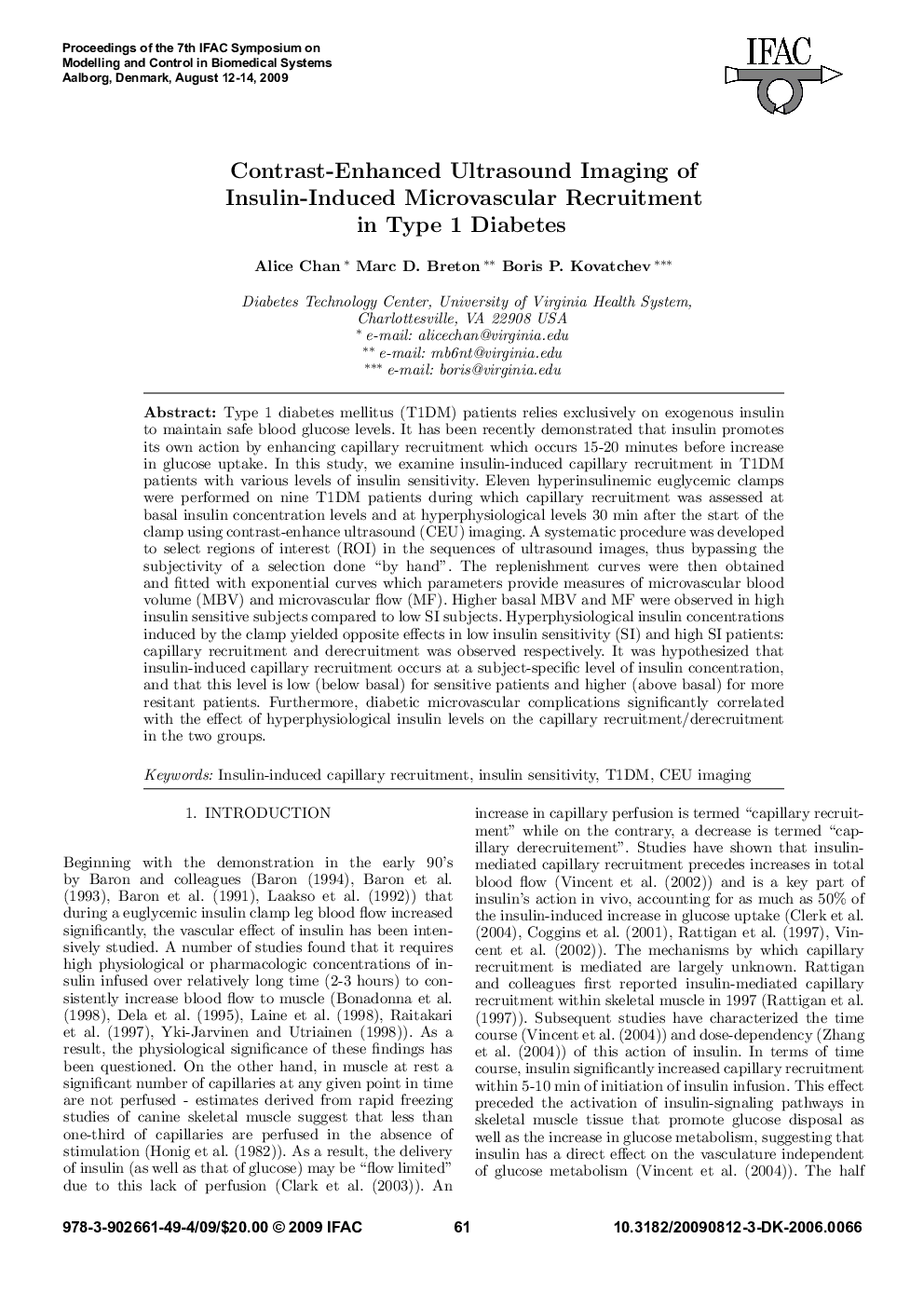| Article ID | Journal | Published Year | Pages | File Type |
|---|---|---|---|---|
| 719436 | IFAC Proceedings Volumes | 2009 | 6 Pages |
Type 1 diabetes mellitus (T1DM) patients relies exclusively on exogenous insulin to maintain safe blood glucose levels. It has been recently demonstrated that insulin promotes its own action by enhancing capillary recruitment which occurs 15–20 minutes before increase in glucose uptake. In this study, we examine insulin-induced capillary recruitment in T1DM patients with various levels of insulin sensitivity. Eleven hyperinsulinemic euglycemic clamps were performed on nine T1DM patients during which capillary recruitment was assessed at basal insulin concentration levels and at hyperphysiological levels 30 min after the start of the clamp using contrast-enhance ultrasound (CEU) imaging. A systematic procedure was developed to select regions of interest (ROI) in the sequences of ultrasound images, thus bypassing the subjectivity of a selection done “by hand”. The replenishment curves were then obtained and fitted with exponential curves which parameters provide measures of microvascular blood volume (MBV) and microvascular flow (MF). Higher basal MBV and MF were observed in high insulin sensitive subjects compared to low SI subjects. Hyperphysiological insulin concentrations induced by the clamp yielded opposite effects in low insulin sensitivity (SI) and high SI patients: capillary recruitment and derecruitment was observed respectively. It was hypothesized that insulin-induced capillary recruitment occurs at a subject-specific level of insulin concentration, and that this level is low (below basal) for sensitive patients and higher (above basal) for more resitant patients. Furthermore, diabetic microvascular complications significantly correlated with the effect of hyperphysiological insulin levels on the capillary recruitment/derecruitment in the two groups.
